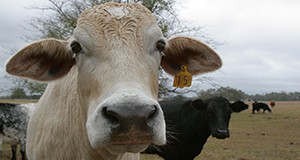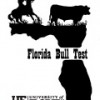 The economic success of beef cow-calf operations depends on the production of one healthy calf per cow per year. To achieve this goal, cow-calf producers need to overcome several obstacles related to the cow, bull, and offspring. Over the last four decades, several advances in reproductive biotechnologies, such as artificial insemination (AI), synchronization of estrus, and fixed-time AI (TAI), have allowed producers to improve the genetic traits of their cattle and shorten the lengths of both the breeding season and subsequent calving season, which can lead to increased overall profitability of cow-calf production systems. This 5-page fact sheet discusses benefits of synchronization and TAI use, obstacles that hinder adoption of reproductive biotechnologies, objectives of the Beef Reproduction Task Force, and factors that can affect the success of TAI programs. Written by Vitor R. G. Mercadante, Darren D. Henry, Francine M. Ciriaco, Pedro L. P. Fontes, Nicky Oosthuizen, and G. Cliff Lamb, and published by the UF Department of Animal Sciences, January 2016.
The economic success of beef cow-calf operations depends on the production of one healthy calf per cow per year. To achieve this goal, cow-calf producers need to overcome several obstacles related to the cow, bull, and offspring. Over the last four decades, several advances in reproductive biotechnologies, such as artificial insemination (AI), synchronization of estrus, and fixed-time AI (TAI), have allowed producers to improve the genetic traits of their cattle and shorten the lengths of both the breeding season and subsequent calving season, which can lead to increased overall profitability of cow-calf production systems. This 5-page fact sheet discusses benefits of synchronization and TAI use, obstacles that hinder adoption of reproductive biotechnologies, objectives of the Beef Reproduction Task Force, and factors that can affect the success of TAI programs. Written by Vitor R. G. Mercadante, Darren D. Henry, Francine M. Ciriaco, Pedro L. P. Fontes, Nicky Oosthuizen, and G. Cliff Lamb, and published by the UF Department of Animal Sciences, January 2016.
http://edis.ifas.ufl.edu/an324
Tag: Francine M Ciriaco
Potential Bull Buyers Perceive Increased Value to their Operations When Purchasing Bulls from the Florida Bull Test
 Since its beginning in 2000, the Florida Bull Test has been under constant evolution to achieve its goal of helping producers select high-quality sires, thereby improving production and profitability of beef cattle producers in Florida and the Southeast United States. A survey of potential buyers before the 2014 sale succeeded in identifying which characteristics of bulls are most important to buyers purchasing bulls: purchasing bulls from the Florida Bull Test increases the value of calves sired by improving performance, genetics, and feed efficiency of their herds. This 3-page fact sheet was written by Vitor R. G. Mercadante, Darren D. Henry, Francine M. Ciriaco, Paula M. Mercadante, Tessa Schulmeister, Nicolas DiLorenzo, and G. Cliff Lamb, and published by the UF Department of Animal Sciences, November 2014.
Since its beginning in 2000, the Florida Bull Test has been under constant evolution to achieve its goal of helping producers select high-quality sires, thereby improving production and profitability of beef cattle producers in Florida and the Southeast United States. A survey of potential buyers before the 2014 sale succeeded in identifying which characteristics of bulls are most important to buyers purchasing bulls: purchasing bulls from the Florida Bull Test increases the value of calves sired by improving performance, genetics, and feed efficiency of their herds. This 3-page fact sheet was written by Vitor R. G. Mercadante, Darren D. Henry, Francine M. Ciriaco, Paula M. Mercadante, Tessa Schulmeister, Nicolas DiLorenzo, and G. Cliff Lamb, and published by the UF Department of Animal Sciences, November 2014.
http://edis.ifas.ufl.edu/an313